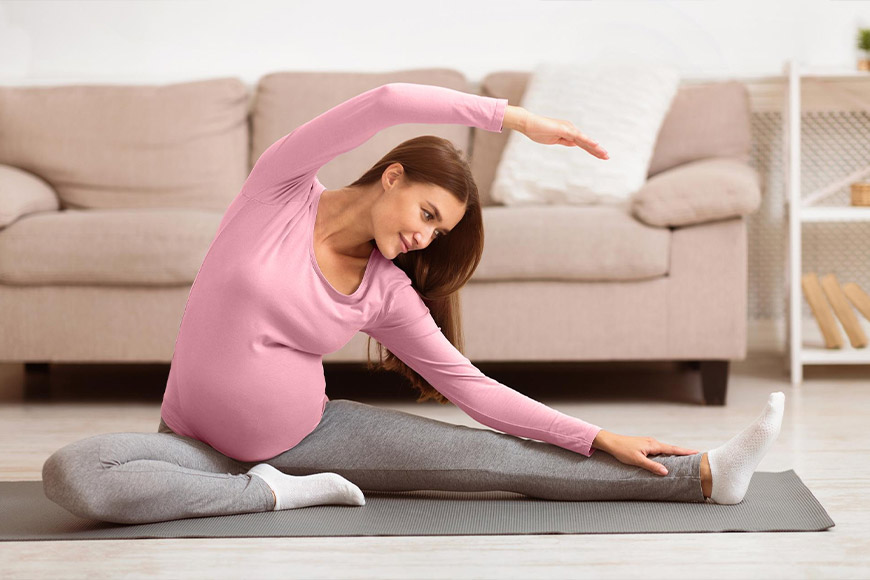
Exercise during pregnancy and training for pregnant women
Exercise during pregnancy and training for pregnant women, Belgrade. TOP PRICE✓ Training for pregnant women✓ Pilates during pregnancy✓ Kegel exercises✓ Abs during pregnancy✓ Physical activity✓
Exercise during pregnancy and training for pregnant women
Here's the translated text while preserving the structure of the original content:
During pregnancy, special attention is given to health through diet and lifestyle changes, and the positive effects are best seen through regular medical check-ups. Expectant mothers take care of the health of their unborn baby during pregnancy, which is one reason why pregnant women choose to exercise. Physical exercises for pregnant women are good for maintaining the health of both the baby and the mother, as well as for keeping fit.
Exercise during pregnancy in consultation with a doctor
Before exercising, a medical examination and consultation should be conducted to avoid any adverse effects. A healthy pregnancy is the most important, and during high-risk pregnancies, one should refrain from any exertion. Once your doctor approves exercise, choose an activity that is most suitable for your health condition, physical fitness, and preferences.
If you were physically active before pregnancy, it is recommended to continue exercising during pregnancy but to adjust the training to “the second condition”. If you have a trainer or instructor, they will ensure to adjust the exercises for you. Pregnant women who did not exercise before pregnancy should be cautious and avoid strenuous activities, and it is best to exercise under professional supervision.
Pregnancy training by trimester
Throughout pregnancy, it is important that exercise remains moderate, as overexertion and testing endurance limits would be completely incorrect and dangerous during this period. Ensure that your heart rate remains below 140 beats per minute.
Exercises for pregnant women in the first trimester
During this period, significant anatomical changes in the body are not yet noticeable, and the body is adjusting to pregnancy. Most pregnant women experience nausea and weakness, so it is not recommended for those who did not exercise before pregnancy to start in the first trimester.
Keep in mind that your body is expending more energy than usual, and if you cannot breathe properly or speak without difficulty during the workout, reduce the intensity. It is also important to avoid overheating, so avoid overly hot or humid spaces and drink plenty of fluids.
Recommended exercises are related to strengthening the entire musculature, with an emphasis on breathing exercises, strengthening the muscles of the back, abdomen, and pelvic floor. These muscles will change the most during the upcoming period. Training should not last longer than an hour.
Exercise for pregnant women during the second trimester
This period is ideal for exercise, especially for pregnant women who were not physically active before pregnancy. Nausea and fatigue disappear, and the body has more energy for achieving better physical fitness.
The focus of exercise in the second trimester should continue to be on breathing exercises that positively affect the diaphragm and intercostal muscles. Additionally, work on strengthening the muscles of the back, glutes, pelvic floor, and shoulder girdle. It would also be beneficial to incorporate some balance exercises.
Exercises for pregnant women before childbirth – third trimester
In the final months of pregnancy, the body is preparing for childbirth and one may experience fatigue, loss of energy, and discomfort in the pelvic area due to the baby's growth. If you feel well, you can continue with physical activity.
Stretching exercises during this period are good for muscles and joints, while cramps in the calves can be best alleviated by massages and stretching along with magnesium supplementation. Strengthening the gluteal muscles will reduce lower back and hip pain and may help the baby settle lower in the pelvis.
Training should focus on lighter loads, as due to changes in balance and the secretion of relaxin, pregnant women are less stable, thus increasing the risk of injury. Throughout pregnancy, Kegel exercises are recommended as they relax the muscles and ease childbirth. They improve circulation in the rectal area, reducing the likelihood of hemorrhoids.
Other tips related to exercise during pregnancy
When exercising, try not to wear tight clothing and wear a quality sports bra that provides comfort and good support. Breathe deeply and drink plenty of water, and avoid wearing slippery or inadequate shoes. If it's very hot, avoid overheating and exercise early in the morning or in the evening.
Exercising indoors is not always ideal, so if you must, ensure proper ventilation. If you experience any pain during exercise, stop immediately, and the safest signs that something is wrong are dizziness, increased heart rate, chest pain, vaginal bleeding, or similar symptoms.
Activities ideal for pregnant women
Some activities like walking, swimming, stretching, and yoga can be perfect for pregnant women as they do not overly stress the body. Additionally, during good weather, biking can be enjoyable, but only in the early stages of pregnancy as it is not recommended later due to reduced balance.
Yoga helps in relieving stress and pressure in the body, and most positions are adapted for pregnant women. You should not overstretch or lie on your back too much, but consult with your doctor before starting any exercise.
Regarding exercise during pregnancy, many experts agree that physical activity cannot be harmful, and moderation is key during this period. Eliksir Health Care can provide you with the highest quality services for exercises during pregnancy and maintaining health throughout pregnancy.
How to Contact Us?
For more information about our services or if you have any questions, feel free to visit our CONTACT page and get in touch with us. We’re here to help!